How Singapore tests autonomous vehicles before they go on public roads
Singapore has issued more than 50 authorisations for AV testing since 2017, with 19 vehicles currently deployed on public roads.
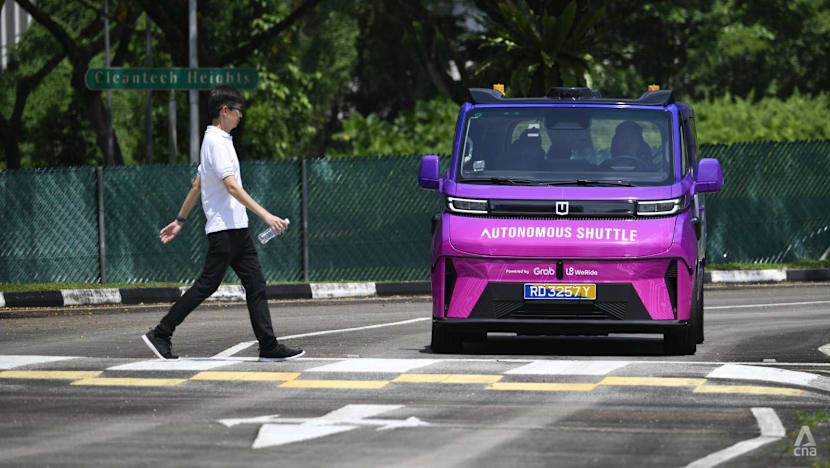
A pedestrian crosses the track in front of an autonomous vehicle during a live demonstration on the CETRAN test circuit on Sep 25, 2025. (Photo: CNA/Wallace Woon)

This audio is generated by an AI tool.
SINGAPORE: On a test circuit in Jurong West, a sleek five-seater minivan glides to a smooth stop – no hands on the wheel.
It's one of several autonomous vehicles (AVs) undergoing a series of tests to prove it can safely share the road with Singapore's drivers and commuters.
Acting Transport Minister Jeffrey Siow recently said Singaporeans can expect to see "many" AVs on the roads in five years, with pilot deployments starting in Punggol by the fourth quarter of this year.
However, before any AV can operate independently on public roads, it must pass a rigorous evaluation process overseen by the Land Transport Authority (LTA).
To conduct trials, companies must first obtain authorisation from the LTA. Since 2017, more than 50 such authorisations have been issued, and 19 AVs are currently deployed on roads. These include WeRide's Robobus at Resorts World Sentosa and Gardens by the Bay's Auto Rider.
Once authorised, operators must meet several requirements. These include having qualified safety operators, operating only within declared geofenced routes and equipping each vehicle with a data recorder to log any incidents.
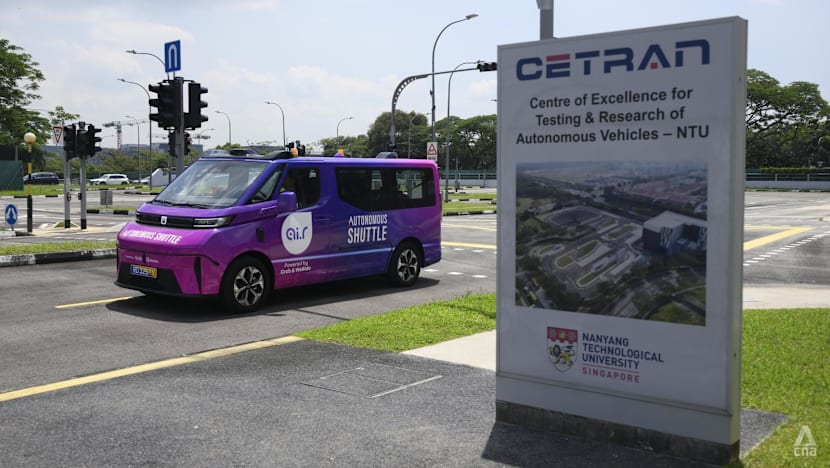
Mr Nicholas Ng, director for the Centre for Autonomous Mobility at LTA, likened the testing process to that of a human driver earning a licence.
“It’s no different from an aspiring human driver having to take your basic theory, advanced theory and also your practical (exam),” he said.
With no international standards for on-road AV operations, LTA works with the Centre of Excellence for Testing and Research of AVs at NTU (CETRAN) to define local requirements and ensure that AVs can be deployed safely on public roads.
Singapore’s operating environment – including its climate, road infrastructure and unique traffic patterns – means that AVs must be fine-tuned specifically for local use, Mr Ng added.
AV ASSESSMENT FRAMEWORK
Once a fixed route has been approved by LTA, operators embark on an AV assessment framework – a step-by-step evaluation to determine readiness for driverless deployment.
Throughout the process, LTA monitors AVs in real-time and analyses performance data.
The first assessment categorises whether an AV has a deployable or developmental solution.
Deployable solutions must have a proven track record of Level 4 driverless operations, with at least five similar AVs deployed for one year, with supporting data such as mileage, safety records and incident reports.
Developers must also partner local firms and present a clear use case and deployment roadmap.
These AVs then undergo a closed-circuit basic safety test, known as the M1 test. This involves manoeuvres such as stopping for dynamic and static obstacles, manual takeovers and emergency stops.
If the vehicle passes, it may conduct public road trials along the routes specified in its authorisation. A safety officer must be at the wheel.
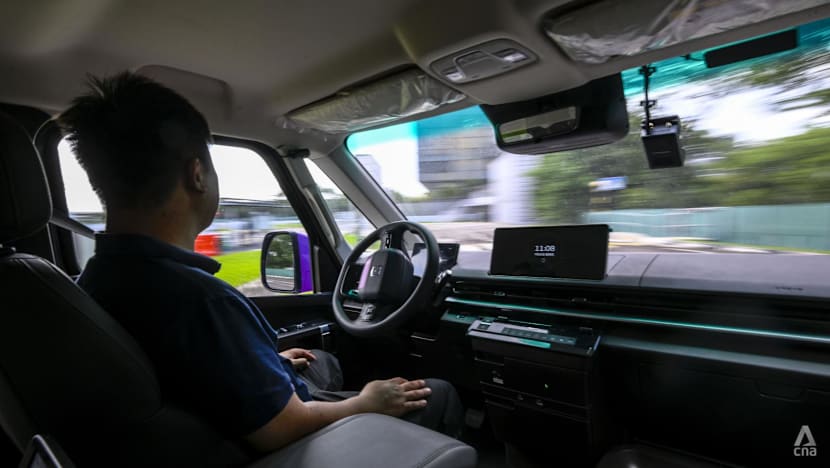
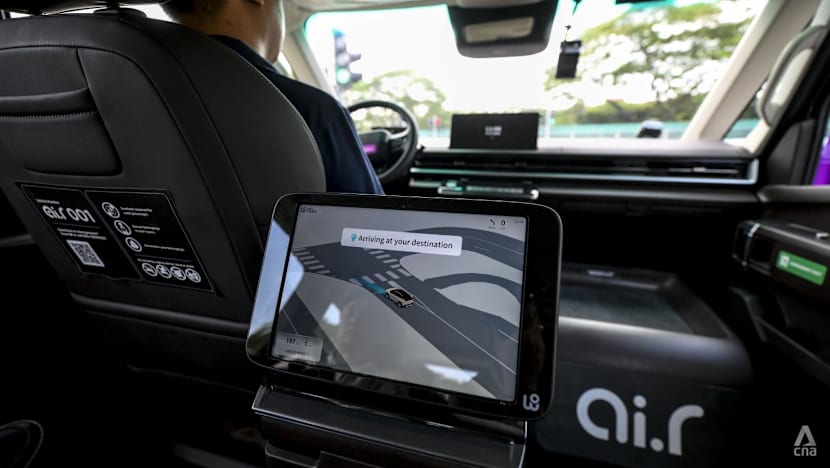
Subsequent stages include a demonstration for stakeholders like LTA and the traffic police, followed by a remote operations assessment. Here, its situational awareness, communication system, fallback control mechanisms and emergency protocols are evaluated.
A document review then checks for safety, quality, change management and cybersecurity. Maintenance planning and operator training are also assessed.
Two stages of deployment readiness assessment follow.
The first tests self-driving capabilities under real-world conditions, including interaction with other road users, varying traffic and weather conditions and the vehicle’s ability to prompt a human safety operator when needed. At this stage, a safety operator remains in full control from the driver’s seat.
The second stage verifies the AV’s remote operation capabilities and supporting procedures. While a safety operator may still be present, their role is limited – such as using an emergency stop button.
Once all stages are cleared, an AV can operate independently on the road without a safety operator onboard, but will be monitored remotely.
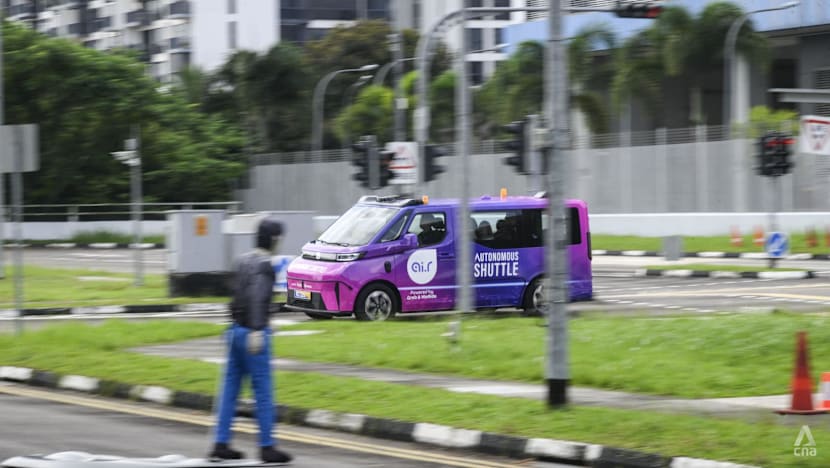
RIDING IN AN AV
CNA rode in a WeRide GXR five-seater at the CETRAN test circuit in Cleantech Heights, Jurong West.
The AV is equipped with seatbelt detection for passengers and a detection range of up to 200m. During testing, it executed smooth turns and stopped safely for both a human and a dummy pedestrian crossing the road.
Mr Niels de Boer, chief operating officer and senior programme director at NTU’s Energy Research Institute, said many AV components are developed overseas and must be adapted for Singapore.
Traffic “behaves differently everywhere”, he said, adding that features like yellow box junctions are unique to Singapore’s road system.
To scale up testing, NTU plans to double its current volume and is working with LTA to shift from individual to batch testing.
















